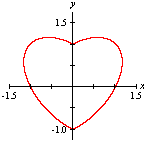题目:http://acm.zju.edu.cn/onlinejudge/showProblem.do?problemId=4278
题意:
给出一些文本片段,把文本中的 Tab 字符根据配置,替换成一定数量的空格。
配置分为两种,一种是只提供一个 ts 值,则需要缩进到的位置是一个等比数列。另一种是提供一个 ts 的有限集合,指定一些给定 ts 值,在逻辑上这个集合是无限的,当列位置超出集合中的数字时,后续的 tabstop 位置为连续的以 1 个空格进行递增。
即:
{ T } 在逻辑上相当于 { T, T * 2, T * 3, T * 4, ...... };
{ T1, T2, ..., Tk } 在逻辑上相当于 { T1, T2, ..., Tk, Tk + 1, Tk + 2, Tk + 3, ...... };
分析:
本题目本身是比较简单的。但是值得注意的是:
(1)当给定一个 ts 序列时,ts 序列的数字无序且可能重复(如果去重,可能会导致数组中只剩下一个数字,这时候不能当做等比数列来处理。如果不去重就不必在意这个问题)。所以不能假设序列有序,可以对这个序列进行一次排序。
(2)当只提供一个 ts 值,这时为等比数列。最开始我使用了类似图像的行对齐公式来计算 stop 位置,结果这在一些情况下,结果会多考虑一个 ts 值。实际上的索引为 iCol 的列的 tabstop 值,公式仅仅是 (iCol / ts + 1) * ts 即可。由于我在这里编码心态过急,犯下这个低级失误,导致我不断的 PE N 次,差点崩溃。回到家里我慢慢查看这些步骤才找到这个错误。
代码:

#include <stdio.h> #include <string.h> #include <stdlib.h> typedef struct _TabStop { int count; int ts[500]; char delimit[1024]; } TABSTOP, *LPTABSTOP; //解析配置信息 void ParseTabStop(char *line, LPTABSTOP pTS); //获取 tab stop 位置 int GetStopCol(int iCol, LPTABSTOP pTS); //排序用的比较函数 int cmp(const void* p1, const void* p2); TABSTOP g_TS; int main() { int i, T, col, stopCol; char line[1024], *p; scanf("%ld\n", &T); for(i = 0; i < T; i++) { gets(line); memset(&g_TS, 0, sizeof(TABSTOP)); ParseTabStop(line, &g_TS); while(true) { gets(line); if(strcmp(line, g_TS.delimit) == 0) { gets(line); /*case结尾的空行*/ printf("\n"); break; } col = 0; p = line; while(*p) { if(*p == '\t') { stopCol = GetStopCol(col, &g_TS); while(col < stopCol) { printf(" "); ++col; } } else { printf("%c", *p); ++col; } ++p; } printf("\n"); } } return 0; } //解析 tabstop 配置 void ParseTabStop(char *line, LPTABSTOP pTS) { /*expand tab-stops-configuration <<delimiting-identifier*/ char *p = line + 7; char ch; int index = 0; while(*p) { ch = *p; if(ch >= '0' && ch <= '9') pTS->ts[index] = pTS->ts[index] * 10 + (*p - '0'); else if(ch == ',') ++index; else if(ch == '<') { strcpy(pTS->delimit, p + 2); break; } ++p; } pTS->count = index + 1; qsort(pTS->ts, pTS->count, sizeof(int), cmp); } //获取当前列的 tabstop 位置 int GetStopCol(int iCol, LPTABSTOP pTS) { int i; if(pTS->count == 1) { return (iCol / pTS->ts[0] + 1) * pTS->ts[0]; } else { if(pTS->ts[pTS->count-1] <= iCol) return iCol + 1; for(i = 0; i < pTS->count; i++) { if(iCol < pTS->ts[i]) return pTS->ts[i]; } } return iCol + 1; } int cmp(const void* p1, const void* p2) { int *pX1 = (int*)p1; int *pX2 = (int*)p2; return *pX1 - *pX2; }
补充:
当然,如果不对序列进行排序,也是可以的。区别只是在获取 tabstop 位置时,每次都要完整的线性遍历这个集合(在有序的情况下可以提前结束遍历,或者进一步的用二分查找快速定位),尝试找到满足条件 ts > iCol 的所有 ts 中的最小值即可。










【推荐】编程新体验,更懂你的AI,立即体验豆包MarsCode编程助手
【推荐】凌霞软件回馈社区,博客园 & 1Panel & Halo 联合会员上线
【推荐】抖音旗下AI助手豆包,你的智能百科全书,全免费不限次数
【推荐】博客园社区专享云产品让利特惠,阿里云新客6.5折上折
【推荐】轻量又高性能的 SSH 工具 IShell:AI 加持,快人一步
· PostgreSQL 和 SQL Server 在统计信息维护中的关键差异
· C++代码改造为UTF-8编码问题的总结
· DeepSeek 解答了困扰我五年的技术问题
· 为什么说在企业级应用开发中,后端往往是效率杀手?
· 用 C# 插值字符串处理器写一个 sscanf
· 为DeepSeek添加本地知识库
· 精选4款基于.NET开源、功能强大的通讯调试工具
· DeepSeek智能编程
· [翻译] 为什么 Tracebit 用 C# 开发
· 腾讯ima接入deepseek-r1,借用别人脑子用用成真了~